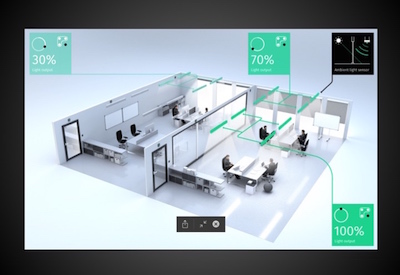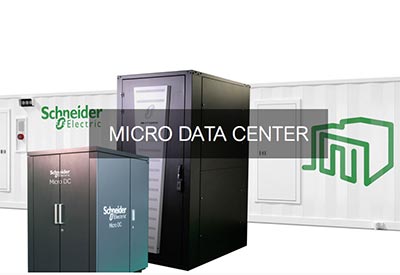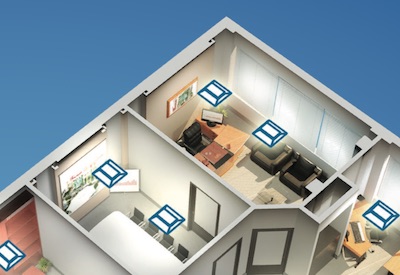Guide to the Canadian Electrical Code, Part I — Instalment 51

Aug 8, 2019
By William (Bill) Burr
This discussion of Appendix J -Annex J20 is based on the 24th edition. The Code is a comprehensive document. Sometimes it can seem quite daunting to quickly find the information you need. This series of articles provides a guide to help users find their way through this critical document. This is not intended to replace the notes in Appendix B or the explanations of individual requirements contained in the CEC Handbook** but will hopefully provide some help in navigating, while reading the code. The 24th Edition of the CE-C, Part I, (C22.1-18)* is now available from CSA Group.
Annex J20 is optionally permitted for use in additions, modifications, renovations or operation and maintenance of existing facilities that employ the Division system of classification. The rules of Annex J20 are normative (mandatory) where used and amend or supplement other requirements of the Code. Additional informative (non-mandatory) information is contained in Appendix G and Annex JB.
Due to the size of this annex, it is discussed in multiple parts. This is Part A – Flammable Liquid and Gasoline Dispensing Service Stations and Garages.
Rule J20-000 states that the scope of Annex J20 applies to existing flammable liquid and gasoline dispensing, service stations, garages, bulk storage plants, finishing processes, and aircraft hangars that employ the Division system of classification.
The definitions in Rule J18-002 provide special terminology definitions for terms used in that section that are supplementary to the definitions in Section 0 and also apply in Annex J20.
Gasoline dispensing stations and service stations
Rule J20-002 points out that Rules J20-004 to J20-014 apply to electrical equipment and wiring installed in gasoline dispensing stations, and other locations where gasoline or volatile flammable liquids are dispensed or transferred to the fuel tanks of vehicles. Note that lubritoriums, service rooms, repair rooms, offices, salesrooms, compressor rooms, and similar locations are excluded and are covered by Rules J20-100 to J20-112.
Rule J20-004 defines the limits of Class I, Division 1, and Division 2 hazardous areas of gasoline and other flammable liquids dispensing stations.
Rule J20-006 requires that wiring and equipment within hazardous areas, as defined in J20-004, comply with the wiring and equipment rules of Annex J18. In addition, where dispensers are supplied by rigid metal conduit, a union and a flexible fitting must be installed between the conduit and the dispenser junction box, in addition to any sealing fittings, that must be maintained if a flexible cable is used.
Rule J20-008 outlines that wiring and equipment installed above hazardous areas conform to rules J20-106 and J20-110 outlined below.
Rule J20-010 requires that a switch, that disconnects all ungrounded conductors simultaneously, be provided on each circuit leading to or through a dispensing pump.
Rule J20-012 specifies that seals, as required by Annex J18, be installed in each conduit run, both entering or leaving a dispenser, as well as cavities or enclosures communicating with a dispenser.
Rule J20-014 reiterates that all non-current-carrying metal parts of dispensing pumps, metal raceways, and other electrical equipment must be bonded to ground, in accordance with Section 10.
Propane dispensing, container filling, and storage
Rule J20-030 points out that Rules J20-032 to J20-042 apply to locations where propane is dispensed to vehicles, portable containers, or to storage containers.
Rule J20-032 contains special terminology that applies to this subsection.
Rule J20-034 outlines the Class I, Division 1, and Division 2 hazardous areas in this subsection, as listed in Table JT-63
Rule J20-036 specifies that wiring and equipment in hazardous areas, defined in Table JT63, conform to the requirements of Annex J18, and that rigid metal conduit, supplying dispensers, conform to Rules J20-006 (2) and (3).
Rule J20-038 requires seals to be installed as required by Annex J18, and seals for propane dispensers be provided as per Rule J20-012.
Rule J20-040 requires that a switch, that disconnects all ungrounded conductors simultaneously, be provided on each circuit leading to or through a propane dispensing device.
Rule J20-042 reiterates that all non-current-carrying metal parts of propane dispensing equipment and raceways must be bonded to ground, in accordance with Section 10.
Compressed natural gas refueling stations, compressors, and storage facilities
Rule J20-060 points out that Rules J20-062 to J20-070 apply to locations where compressed natural gas is dispensed to the fuel tanks of self-propelled vehicles, and to associated compressors and storage facilities, but does not apply to vehicle refuelling appliances installed in accordance with CSA B149.1 that do not have storage facilities.
Rule 20-062 outlines the Class I, Division 1, and Division 2 hazardous areas in this subsection, as listed in Table 64.
Rule J20-064 requires that wiring and equipment within hazardous areas, as defined in J20-062 above, comply with the wiring and equipment rules of Annex J18. In addition, Rule J20-006 (2) and (3) apply where dispensers are supplied by rigid metal conduit,
Rule J20-066 requires seals be installed as required by Annex J18, and seals for dispensers be provided as per Rule J20-012.
Rule J20-068 requires that a switch, that disconnects all ungrounded conductors simultaneously, be provided on each circuit leading to a compressor or dispensing device.
Rule J20-070 reiterates that all non-current-carrying metal parts of dispensing pumps, metal raceways, and other electrical equipment must be bonded to ground, in accordance with Section 10.
Commercial repair garages
Rule J20-100 points out that Rules J20-102 to J20-112 apply to commercial garages where vehicles powered by gasoline, propane, or other flammable fuels are serviced or repaired. Table JB-4 outlines the flashpoints of flammable liquids.
Rule J20-102 outlines the Class I, Division 2 hazardous areas in commercial repair garages.
Rule J20-104 requires that wiring and equipment within hazardous areas as defined in J20-102 comply with the wiring and equipment rules of Annex J18.
Rule J20-106 requires that fixed wiring, above hazardous areas in commercial repair garages, be installed in accordance with Section 12. Flexible cord of the hard-usage type is to be used for pendants, portable lamps, portable motors and other portable equipment.
Rule J20-108 requires seals installed in commercial repair garages as required by Annex J18 and that raceways buried below, or embedded in a masonry floor that lead to or through a hazardous area above the floor, be considered within the hazardous area.
Rule J20-110 requires that in a commercial repair garage
• fixed equipment above hazardous areas but less than 3.6 m above floor level, that may produce arcs, sparks, or particles of hot metal, be of the totally enclosed type or constructed to prevent escape of sparks or hot metal particles;
• permanently installed luminaires located over lanes through which vehicles are commonly driven may be suitable for non-hazardous locations and may be located a minimum of 3.6 m above the floor or be protected by a guard or by location;
• portable lamps must:
◦ be the totally enclosed gasketted type
◦ be equipped with a handle, lampholder, hook, and substantial guard attached to the lampholder or handle, and
◦ have all exterior surfaces that may contact battery terminals, wiring terminals, or other objects be of non-conducting materials or be effectively protected with an insulating jacket
◦ be of the unswitched type, and
◦ not be provided with receptacles for attachment plugs
Rule J20-112 requires that battery charging equipment and batteries being charged, not be located within the hazardous areas of commercial repair garages, as classified in Rule J20-102.
In the next instalment, we will be discussing Annex J20 – Part B – Bulk Storage Plants, Finishing Processes and Aircraft Hangars in the Class and Division System of Hazardous Locations Classification
* The source for this series of articles is the Canadian Electrical Code, Part I, (C22.1-18) published by CSA.
** Note the CEC Handbook is also published by CSA.
William (Bill) Burr is the former Chair of the Canadian Advisory Council on Electrical Safety (CACES), former Director of Electrical and Elevator Safety for the Province of BC, and former Director of Electrical and Gas Standards Development and former Director of Conformity Assessment at CSA Group. Bill can be reached at Burr and Associates Consulting billburr@gmail.com.
















